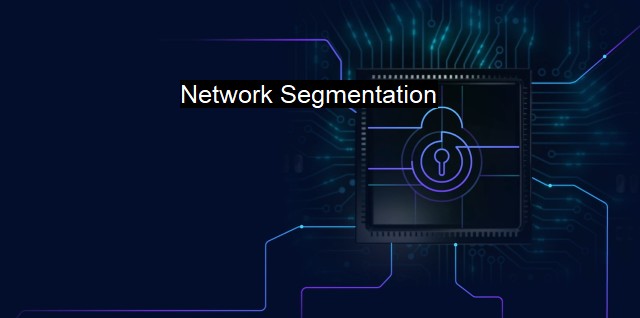What is Network Segmentation?
The Power of Network Segmentation in Cybersecurity: Securing Sensitive Data from Cyberattacks
Network Segmentation signifies the process of partitioning a network into less complex components or smaller subnets to reinforce security. Many business networks typically operate as a single, unrestricted system, where devices have unrestricted access to all resources. While this is efficient for communication within the organization, it poses a significant security risk. An unauthorized access in one area could potentially affect all parts of the network. Consequently, the principle of network segmentation comes into play to enhance network performance and security.Network segmentation in cybersecurity and antivirus context is used to minimize the impact of a cyber attack when a part of the organization gets compromised. It forms a part of best practices in any comprehensive information security plan, helping to limit the success of targeted attacks or security breaches. By segmenting the network, an organization can create barriers that regulate traffic flow and restrict attackers' ability to navigate through the internal systems. It limits the lateral movement of threats within the network, making it difficult for the attackers to reach sensitive or critical data.
Network segmentation can be executed based on need and risk. Smaller organizations might segment their network per division or department, while larger corporations might opt for a more extensive segmentation strategy. A couple of host servers carrying sensitive data could require particular protection under a distinct segment, for instance. The classification typically revolves around risk factors, data sensitivity, legal and industry requirements as well as organizational usage.
Implementation of network segmentation can be technically challenging. It requires deep understanding and visibility into networking environments. Detection and mapping of the network’s traffic patterns, data flow, group communication, applications, services and other vital elements is preliminary work before the segmentation process.
Virtualization plays a large role in network segmentation by offering a virtual environment where servers, storage devices, and network resources can run. This allows the segmented portions of the network to operate separately, making it even more difficult for potential attackers to harm the network system. Utilizing VPNs, secure web gateways, and virtual switches strengthens segmentation, enabling businesses to operate in controlled, monitored, and limited virtualized segments.
Certain prerequisites are required to efficiently implement network segmentation. Organizational leaders should have a comprehensive understanding of the flow of their network's data and operations, while also identifying assets requiring heightened security measures. Tools to monitor access and behaviors providing visibility into internal and external threats are also necessary.
Network segmentation offers numerous advantages, most notably improved cybersecurity. By increasing control over data and traffic flow, adverse incidents can be contained in one area, mitigating the risk of a wide-spread network breach. Likewise, it leads to enhanced performance due to reduced network traffic. Antivirus plays a vital role in this context, enhanced by the segmentation strategy that would limit the infection to a single segment. Through the targeted placement of firewalls and intrusion prevention systems, segmentations provide a robust, layered defense against cyber threats.
Though it might call for a considerable investment in terms of time and resources, the benefits offered in terms of risk reduction, increased control over network architecture and data protection can't be overstated. Network segmentation, therefore, comes across as a holistic strategy that intertwines the efficiency and security needs of an organization in the face of growing network-centric cyber threats.

Network Segmentation FAQs
What is network segmentation?
Network segmentation is the process of dividing a computer network into smaller subnetworks, called segments or zones, to improve overall cybersecurity.Why is network segmentation important for cybersecurity?
Network segmentation makes it harder for attackers to move laterally through a network after gaining access to an endpoint in one segment. It also limits the scope of attacks, making them easier to contain and mitigate.How can antivirus programs be used in network segmentation?
Antivirus programs can be used to enforce policies that limit the movement of malware between network segments. For example, an antivirus program can be configured to block any attempt to transfer a file from a high-security segment to a lower-security segment.What are some best practices for implementing network segmentation?
Some best practices include regularly reviewing and updating segmentation policies to ensure they are still effective, using multiple layers of segmentation to create a defense-in-depth strategy, and monitoring network traffic to detect and respond to potential threats.| | A | | | B | | | C | | | D | | | E | | | F | | | G | | | H | | | I | | | J | | | K | | | L | | | M | |
| | N | | | O | | | P | | | Q | | | R | | | S | | | T | | | U | | | V | | | W | | | X | | | Y | | | Z | |
| | 1 | | | 2 | | | 3 | | | 4 | | | 7 | | | 8 | | |||||||